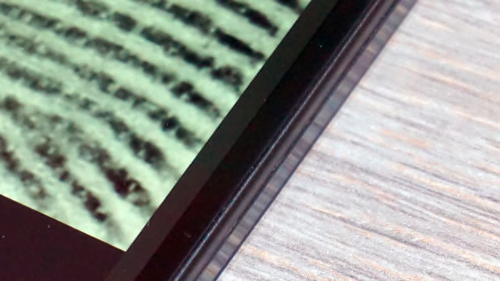Move over, Touch ID. Qualcomm has a new entrant in the fingerprint-scan wars that—according to the company—could leave Apple’s existing technology in the dust.
On Monday Qualcomm unveiled its Snapdragon Sense ID technology, which it says can scan your finger even if it’s a little wet or dirty. It will also function through “glass, aluminum, stainless steel, sapphire, and plastics,” meaning that smartphone makers can integrate the feature right into their hardware.
The problem with adapting Hollywood technologies like fingerprint scanning to real life is that consumers often find them less dazzling than on the screen. Apple’s Touch ID fingerprint recognition, for instance, won’t work if you’ve hurt your finger or even if it’s just sweaty.
See also: Apple’s Touch ID Fingerprint Scanner Is Still Hackable, But Don’t Panic
Qualcomm’s take on the fingerprint reader is ultrasonic, and uses sound waves to identity a user’s unique fingertip. The press release goes into the scientific details:
QTI’s ultrasonic-based solution uses sound waves to directly penetrate the outer layers of skin, detecting three-dimensional details and unique fingerprint characteristics, including fingerprint ridges and sweat pores that are not possible to detect with current capacitive touch-based fingerprint technologies.
ReadWrite’s Adriana Lee tested out the feature at Qualcomm’s booth at Mobile World Congress. The “holes” you can see in the fingerprint ridges are her sweat glands, visible with the sensor’s fingerprint mapping technology.

A more accurate fingerprint reader doesn’t just mean fewer rejected swipes. It also makes it more difficult for bad guys to fake a user’s fingerprint.
Snapdragon Sense ID will be built into Qualcomm’s new Snapdragon 810 and 425 chips, and also available as a standalone part for manufacturers. Technology devices that utilize the fingerprint sensor technology should be available as soon as the later half of 2015.
Photos by Adriana Lee for ReadWrite









